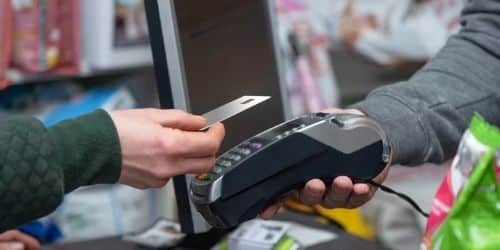Accepting payments both online and in person is essential for any small business nowadays. Cash is always an option, and there are no fees associated with accepting cash as payment, but it’s important for small businesses to accept a range of payment options to ensure they don’t lose customers to competitors who do. Only approximately 36% of clients have cash on them consistently these days. But in the end, the number of variables will determine which payment method is best for small businesses. The volume of your transactions, the person managing the money, and your accounting system should all be taken into account. To that end, let’s discuss small business payment systems.
Best Payment Systems for Small Business
When it comes to small business payment options, a smooth, stress-free checkout process is vital for success. There are numerous online payment methods for small businesses available. With several alternatives, there’s a payment method for every small business. Whichever payment methods you employ depend on your business and consumers.
#1. Direct Debit
Direct debit is a simple payment option. Like credit cards or cash, direct debit allows one-time payments, but it avoids transaction fees and poor success rates.
Direct Debit automatically schedules payments on due dates, eliminating late payments. You should not rely on Direct Debit if you require payment immediately, as it takes at least three business days to clear your account.
With a Direct Debit Guarantee, users are safe from having their accounts automatically charged for any reason.
#2. Cards
Most consumers prefer card payments. According to a 2020 BRC Payments Survey, 78% of retail transactions were paid for by either debit or credit cards. Small businesses could lose sales without card payments. Card payments speed up the checkout. Small businesses can reach a broader audience when consumers finance larger transactions.
High costs, chargebacks, and the possibility of being denied are negatives. Spring 2023 brought new card identification checks to curb fraud, resulting in more unsuccessful payments.
#3. E-wallets
Digital wallets are the preferred payment option for many small enterprises, especially service-oriented industries and start-ups. You’ll need a mobile POS system to store customer information and provide receipts. Google Pay and Apple Pay use NFC to let users pay with a phone tap.
Digital wallets are convenient for consumers but not SMEs. High fees and the time and money it takes to connect numerous wallets are issues for businesses. You’ll also need an NFC reader.
#4. Cash/Checks
Hairdressers, minicabs, and other service businesses still accept cash. Businesses consider cashless payments as more convenient from accounting and, now, a hygienic perspective.
Digital payment mechanisms are also replacing checks. In 2020, 6% of UK transactions were made with checks, down from 23% in 2019. Cheques will remain for a while. In 2011, the Payments Council canceled a plan to close the cheque-clearing system by 2018, and checks will be kept as long as needed.
Similar to cash, there are no upfront expenses for taking cheques, but there are hidden costs in manual bookkeeping and the time required to deposit cheques.
#5. Payment Gateways
Small businesses must accept multiple payment methods to expand. Payment gateways make online payments from your website easier. There will be a huge difference in pricing and payment types accepted by the gateway, so compare carefully. Technical considerations must be made. You may need a developer to integrate your website’s payment gateway.
#6. Email Bills
As a graphic designer or landscaper, email invoicing is typically the quickest payment method. You can embed payment links in your email after the work is done, leading the client to a payment page to provide bank or card details. Keep track of invoices, payments, and receipts with an automated system.
Online Payment Systems for Small Business
As a small business owner, you have several great options for online payment devices and tools. For people who sell goods or services online, it’s incredibly important to have a trusted e-commerce payment service. Online payment services accept debit and credit card payments and usually charge a fee to accept these payments.
Three of the most popular small business payment systems include PayPal, Stripe, and Square.
#1. PayPal
Accepting credit and debit card payments online is simple with PayPal. PayPal offers choices if you need to accept payments both online and offline. For customers, using PayPal for online, in-person, or mobile payments simplifies the purchasing process. While present, you can collect payments anywhere by converting your tablet or smartphone into a payment terminal.
#2. Stripe
Small business owners can use one piece of software, Stripe, to accept payments both online and offline. Stripe processes payments all throughout the world, whether you do business locally or abroad. With the help of this software, you can effectively manage payments and feel secure knowing that Stripe Radar is guarding your company against fraud.
Due to its ability to accept a variety of payment methods, Stripe is especially beneficial for small businesses looking to go internationally.
#3. Square
For small business owners, Square provides a range of payment options, including credit card payments. They start by providing Square Point of Sale, a point-of-sale system that may be utilized in-person or online using a mobile device. They also provide a variety of user-friendly hardware choices, which further streamlines transactions. Contactless and Chip, Register, Terminal, Reader, and Stand are some of these accessories and hardware. You may manage your business online with Square on a very user-friendly interface.
Best Online Payment Systems for Small Business
#1. DepositFix
DepositFix integrates HubSpot, Stripe, and PayPal. You can collect payments through HubSpot forms, and the information will go to Stripe or PayPal. This technology helps you to construct workflows following customers’ payments so they automatically receive follow-up emails, receipts, upsells, or product reviews.
DepositFix is great for digital enterprises. It also allows donations and bills. It provides you and your clients with top-notch security. This platform offers a self-service Help Library or phone or email customer service.
#2. Stripe
Stripe offers payment processing services for organizations, making it a suitable payment option for both small and large corporations. With the help of this comprehensive platform, businesses can accept payments digitally both online and offline, all while reducing fraud thanks to its Radar protection. Popular online storefronts like WooCommerce and Shopify are integrated with Stripe.
Globally well-known Stripe accepts more than 135 different currencies and payment methods. It’s simple to use and can be set up for use in your company in just about ten minutes.
#3. One Page Pay
One Page Pay interfaces with HubSpot, Stripe, PayPal, Take Payments, and GoCardless. It generates a payment form page and sends sale data to your CRM or email. This platform can protect your clients’ information with bank-level security in just five minutes.
Choose a one- or two-column form, or let One Page Pay develop one for you. This solution interfaces with HubSpot, so it automatically sends customers surveys or digital products following transactions. Transaction reports can be generated.
#4. Square
Many small businesses prefer to use Square as it helps restaurants take internet orders, sell merchandise, and arrange appointments. This platform lets you send invoices and collect money, and it offers a free eCommerce solution to help you start your business.
Square offers e-gift cards, hardware, and an analytics dashboard. Square offers a free company bank account and payroll management, including time card entry and automatic payment. With its online payment solution, you may add shopping cart buttons, buy links, and QR codes to guide customers to your goods and services.
#5. Checkout HQ
Imagine being able to build a searchable database of your products, customize payment and quote forms, and get attribution reports so you can see how your marketing campaigns affect your sales. Making this all possible is Checkout HQ, which interfaces with HubSpot to simplify online payments, makes this all possible.
The platform integrates with your brand right out of the box because it instantly matches your current HubSpot theme. You may personalize the checkout process to improve the consumer experience, and it interfaces with Stripe for payments.
#6. Collect
Collect enables you to accept credit card payments online without redirecting customers. It makes the user experience smooth from browsing to purchasing and requires no coding.
Collect is currently integrated with Stripe and plans to add others. You pay for Collect without a per-transaction cost.
#7. Authorize.net
To better meet the needs of your clients, this platform enables your company to accept payments via credit card, contactless payment, and even electronic checks. Everything related to authorizing, capturing, and securely settling payments is handled by Authorize.net.
Each year, the program assists businesses in managing about $149 billion in payments.
#8. PayPal
Customers can pay fast and easily with just one click on the platform, and its ground-breaking Store Cash function aids in turning consumers who have abandoned their shopping carts into customers.
PayPal can operate with your current systems because it interfaces with many popular eCommerce platforms. You can also collaborate with PayPal to build a more capable and personalized online payment solution, or you can add a shopping cart, buy now, or donate buttons quickly.
#9. Intuit
Intuit offers online payment capabilities to businesses wishing to take payments. Credit cards, debit cards, eChecks, and ACH are accepted online and in person.
You can schedule automated, recurring invoices, and payments are integrated with your Quickbooks account for simple bookkeeping, speedy deposits, receipt classification and capture, bill pay, and more.
#10. Dwolla
Dwolla is a scalable online payment system for growing businesses. The payment platform may be customized to your company’s needs and brand, and it provides excellent data security.
If you have contractors or customers to pay, you can send and receive money. Dwolla accepts ACH, balance-to-balance, real-time, push-to-debit, and wire transfers.
Credit Card Payment Systems for Small Business
Whether online or in person, the most desired form of payment is that of cards. In fact, 75% of customers say they prefer using debit or credit cards to make payments. And of course, making credit card payments as a customer is a simple process.
The credit card small business payment systems include:
#1. Point-of-Sale (POS) Software:
This payment system bills the consumer offers the chance to tip gathers emails, keeps tabs on purchases, organizes receipts, etc. Payment gateways, a secure method for clients to pay for services or goods from their online shopping cart, are frequently included in point-of-sale software.
#2. Virtual Terminal:
Small businesses can utilize a virtual terminal to enter the credit card number into a computer or mobile device during checkout if they do not want to buy a card terminal or card reader.
#3. Card Reader:
Many small businesses choose this option because they can utilize a mounted swipe/chip/tap card terminal to read the customer’s card or link the card reader to their smartphone.
Mobile Payment Systems for Small Business
“Cash is king” is losing relevance in today’s digital society. Many people don’t carry cash on a regular basis.
Small business operators should provide mobile payments to tech-savvy customers. Customers want you to have the necessary hardware to accept their preferred payment option, whether it be chip cards or Apple Pay.
Mobile payments with cached ACH, bank account, or card numbers save customers and companies time. Contactless payments improve consumer and employee safety.
Mobile payments help small firms handle receivables. This payment-collecting method speeds up money transfers to your company’s bank account. Electronic records simplify bookkeeping and accounting, whether using QuickBooks or not.
Three Different Types of Mobile Payment Options
#1. Point-Of-Sale (POS) Payments
Customers can be charged at a point of sale, sometimes referred to as a point of purchase, on your website, in your e-commerce store, or at a physical place where your business is located.
A good example of POS is Square; Square offers its customers a free card reader for face-to-face transactions. With this POS system, a credit card reader attaches to an iOS or Android mobile device to process credit or debit card transactions.
Easy and fast setup. Square doesn’t require long-term contracts. This is a great payment method for mobile small company owners.
#2. Contactless Payments
Contactless mobile payments require clients to tap their phones on a card reader or open an app. There are various popular mobile wallet options some of them include:
#3. Apple Pay
To use this mobile payment app, you need an iPhone or Apple Watch.
#4. Google Pay
This program works with Apple and Android NFC chips. Google Pay is cost-effective for small businesses because there are no transaction or monthly fees.
#5. Venmo
Venmo, owned by PayPal, requires merchants to create and keep a business profile. Business owners can make quick bank transfers with Venmo.
#6. Online Payments and E-commerce
Customers that do the majority of their shopping online could use mobile payment methods that speed up the checkout procedure. Here are a few typical e-commerce payment options.
Some examples of them include:
- PayPal
- Stripe
What Are the 4 Types of Payments?
#1. Cash
One of the most popular methods of payment is cash. Coins and paper money are both categorized as “cash”. Cash has the benefit of being instant, but it is not the most secure method of payment because it is essentially gone if it is lost or destroyed. There is no way to get those losses back.
#2. Personal Cheque (US check)
These are purchased using the buyer’s account. In essence, these are paper forms that the buyer must complete and submit to the seller. A few days later, the money is taken out of the buyer’s account after the seller delivers the check to their bank, which then executes the transaction. Cheques are perceived as being slow and somewhat out of date given the rising trend for quick payments.
#3. Debit Card
When using a debit card to pay, the money is taken right out of the customer’s account. It is similar to writing a personal check but easier because there are no forms to fill out.
#4. Credit Card
Debit and credit cards have similar appearances. However, using a credit card to pay delays the buyer’s charge for a while. The purchaser receives a credit card statement with an itemized breakdown of all purchases at the end of each month. As a result, the customer pays his/her credit card company’s bill instead of the vendor’s directly. The corporation may impose interest on the buyer’s unpaid balance if the entire balance of the invoice is not paid. Credit cards are accepted at physical stores as well as online.
How Do I Set up a Business Payment System?
#1. Investigate Your Options
It’s a good idea to do some research because there are many software and payment acceptance options accessible. When weighing your options, bear in mind the following:
- Setup costs
- Finance procedures (direct to your bank account versus retrieving from the provider)
- Regular service charges
- Extra charges per transaction
- Additionally, confirm that your processing service provider will work with a payment form (not all do)
- Create a merchant account.
You might or might not need to go through merchant account underwriting, depending on which option you select in step one.
The software supplier you choose will assist you with the underwriting process if you decide you need a merchant account because of quicker funding, fewer fees, or other advantages.
#2. Create a Payment Form
You can now begin designing your payment forms with your new software.
After deciding which goods, services, and payment methods to accept, submit your logo and turn on the form.
#3. Integrate Into Your Practice
You’ll end up saving a ton of hassle if you switch to online payment forms.
However, you will initially need to perform the essential actions, such as informing your clients and acclimating yourself to the system. Additionally, you must choose whether to link the form from your website or in emails
Is Square or Stripe Better?
The main difference between Square and Stripe is that Square is best suited for in-person transactions, while Stripe is a developer-friendly platform best suited for e-commerce, subscriptions, and other online payments.
Can Stripe Hold Your Money?
To ensure funds can be covered, Stripe holds a reserve on your platform account’s available balance to cover any negative available balances.
Conclusion
It is more crucial than ever for your company to accept alternatives to cash as our society drifts further away from this practice. You could lose out on additional sales if you don’t adjust to your customers’ wants.
Making online payments available to customers makes buying simpler than ever. Additionally, you can increase earnings and client happiness when your online payment system includes extra features like automated follow-up emails or scheduled invoicing.
The kind of payment your company will accept will ultimately depend on your business model and your clients. The ideal payment options for your small business should be cost-effective and able to work with your accounting program. Providing customers with a range of payment choices could improve your cash flow.
Payment Systems for Small Business FAQs
Is PayPal cheaper than Stripe?
No, Stripe is more cost-effective.
Is Stripe free to set up?
There are no setup fees, monthly fees, or hidden fees.
Can I get scammed on Stripe?
Though the Radar Rules protect Stripe account holders who have upgraded their accounts, scam is something that is inevitable especially when it’s not a brick-and-mortar deal.
Related Articles
- PAYMENT GATEWAY: 13+ Best Options In UK (Best Practices)
- How Does Paypal Work? Pros, Cons & All You Need!!!
- ONLINE PAYMENT SYSTEMS: Top 13 Online Payment System & Software in UK
- Best Online Business Checking Account In 2023(+ No Credit Options)
- Paypal Transaction Fees: What are The Transaction and How to Avoid The Unnecessary Fees






